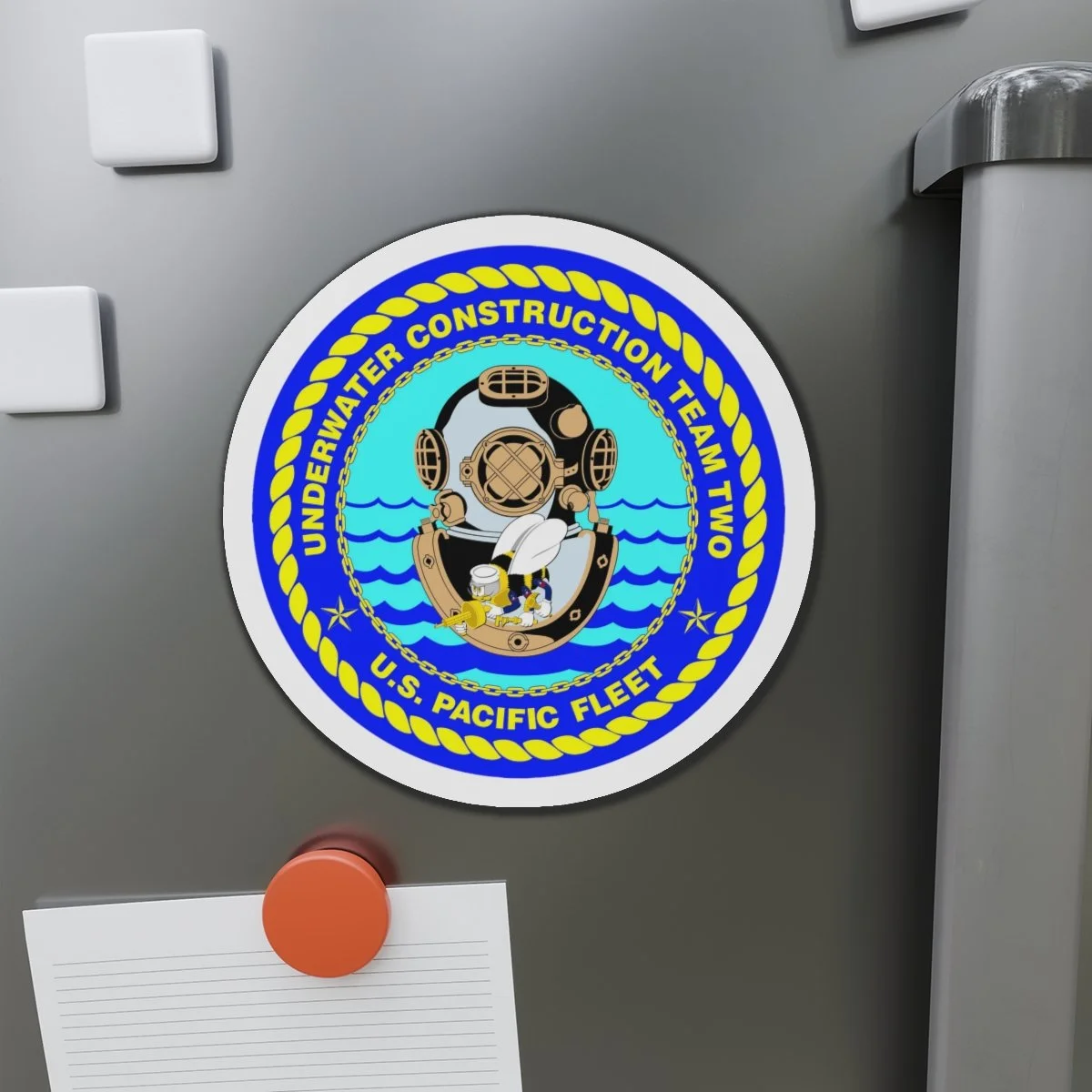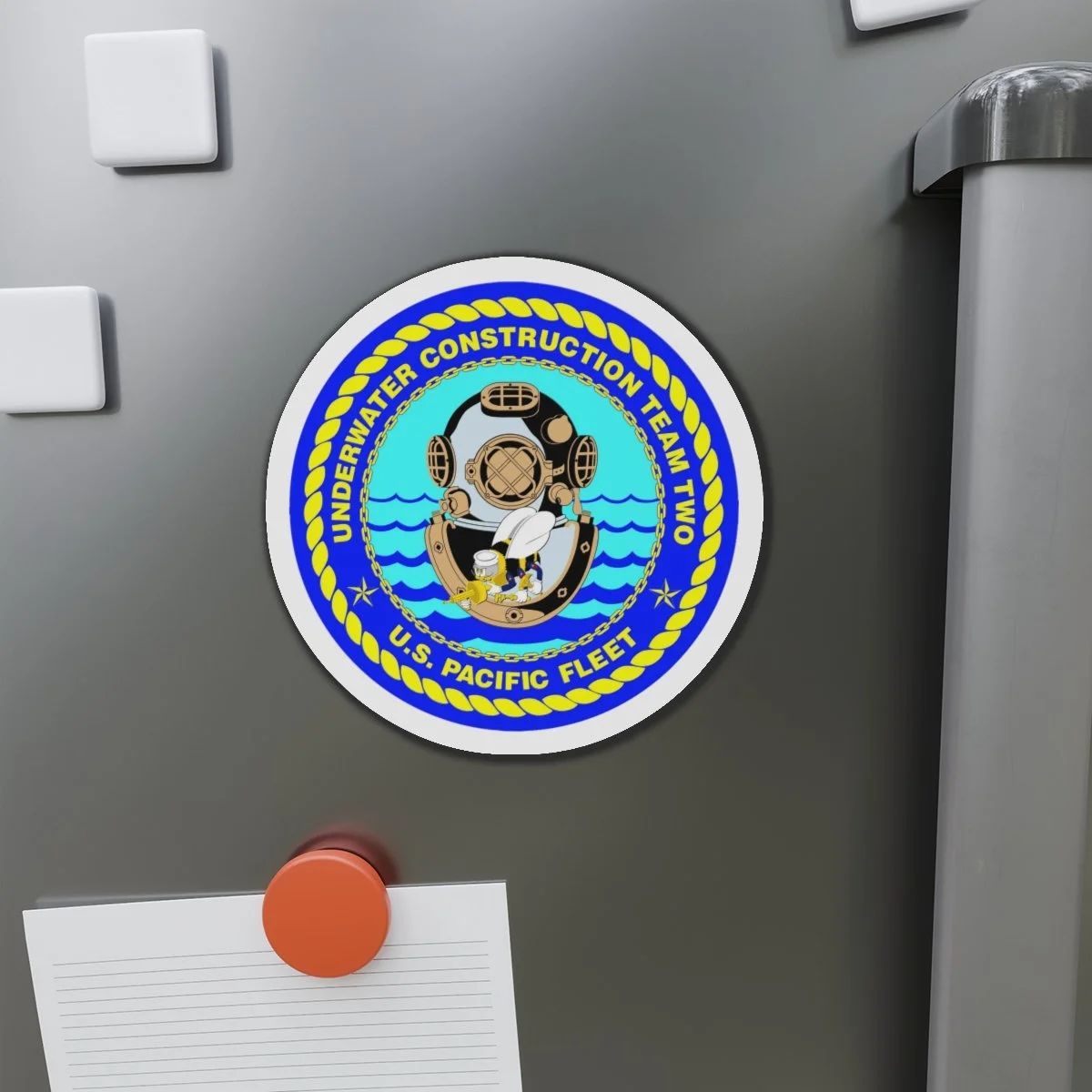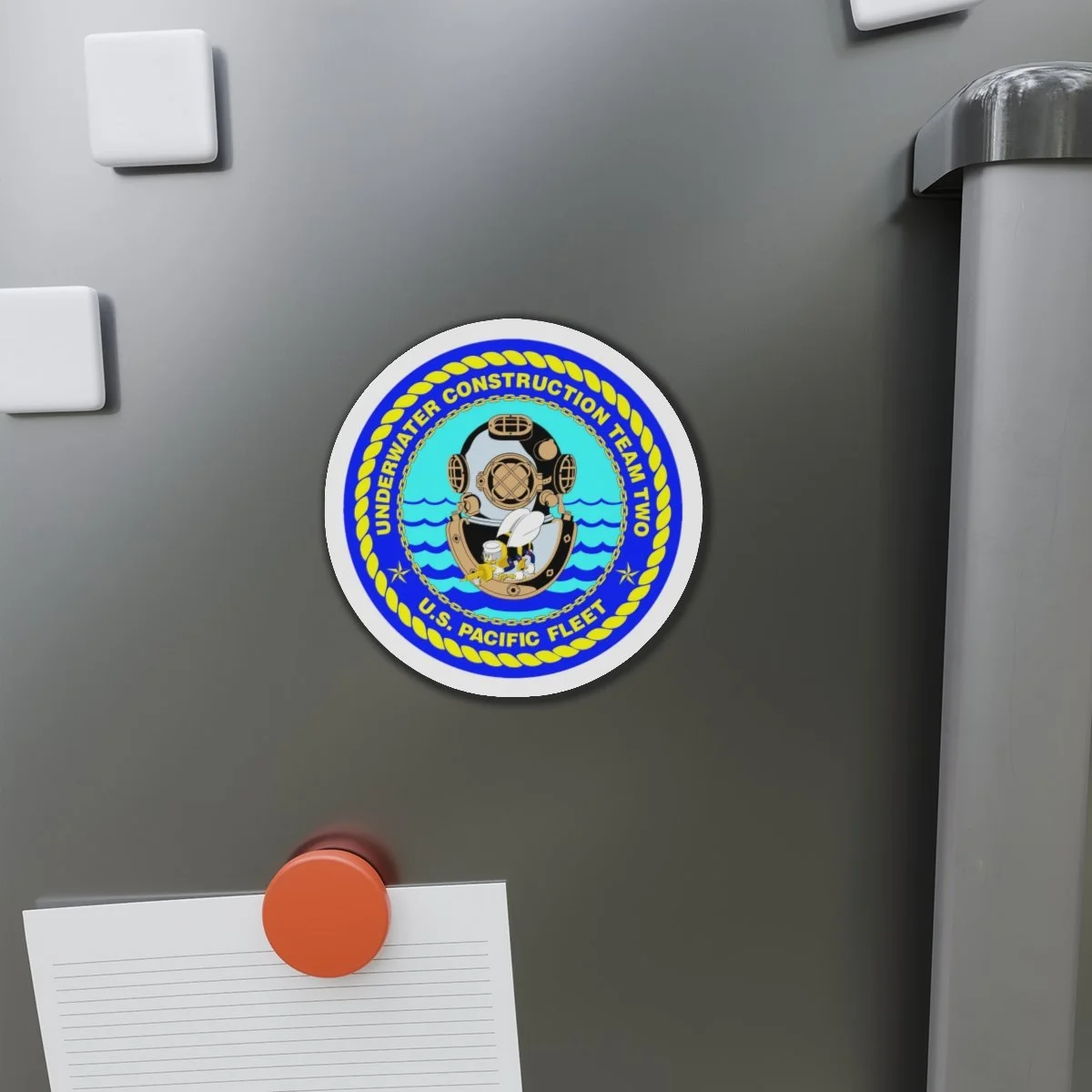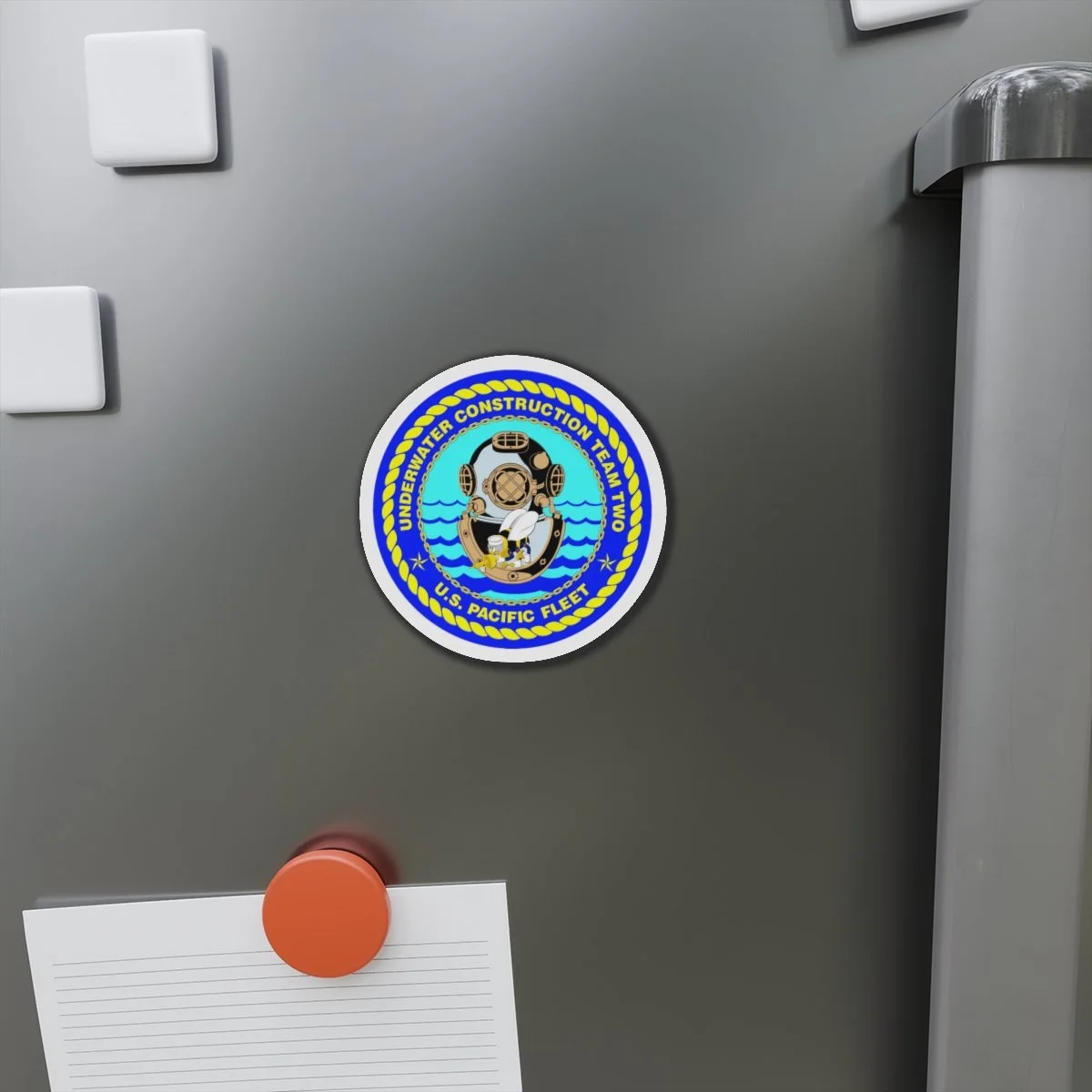 Image 1 of 5
Image 1 of 5

 Image 2 of 5
Image 2 of 5

 Image 3 of 5
Image 3 of 5

 Image 4 of 5
Image 4 of 5

 Image 5 of 5
Image 5 of 5






Underwater Construction Team Two (UCT-2) Car / Truck Vinyl Magnet
Show your battalion pride with the UCT-2 Die Cut Magnet. You can proudly put it on your car and remove when you have to wash your car or truck. Made with the die-cut technique, these magnets are flexible and highly durable. Choose between 4 different sizes and get the best fit for your decorating needs.
Material: Vinyl
Suitable for outdoor use
Flexible and durable material *Black backing
Four sizes to choose from
UCT-2 History
SEABEE divers, integral to the U.S. Navy since World War II, originally supported beach clearing operations for amphibious assaults by utilizing their skills in blasting and diving. These early units evolved into Underwater Demolition Teams (UDT), and currently, Underwater Construction Teams (UCT) carry forward this legacy. UCTs are specialized in using explosives and other methods to clear obstacles, blast coral reefs, and undertake inshore tasks to create navigation channels and mooring facilities for ships. During the 1960s, SEABEE divers contributed significantly to "Man-in-the-Sea" programs, such as SEALAB II and TEKTITE II, marking early achievements in undersea laboratory developments. The formation of a UCT under the 21st Naval Construction Regiment in Davisville, R.I., in 1969, and another under the 31st NCR in Port Hueneme, Calif., in 1971, represented key milestones in formalizing the role of SEABEE divers within the Naval Construction Force. By 1974, these units were commissioned as Underwater Construction Teams, led by Civil Engineer Corps Officers. In 1985, the UCTs were granted Command status, underscoring the importance and autonomy of these specialized units within the Navy. Today, UCT ONE is based in Little Creek, Virginia, continuing the tradition of SEABEE divers in supporting military and humanitarian missions globally.
Show your battalion pride with the UCT-2 Die Cut Magnet. You can proudly put it on your car and remove when you have to wash your car or truck. Made with the die-cut technique, these magnets are flexible and highly durable. Choose between 4 different sizes and get the best fit for your decorating needs.
Material: Vinyl
Suitable for outdoor use
Flexible and durable material *Black backing
Four sizes to choose from
UCT-2 History
SEABEE divers, integral to the U.S. Navy since World War II, originally supported beach clearing operations for amphibious assaults by utilizing their skills in blasting and diving. These early units evolved into Underwater Demolition Teams (UDT), and currently, Underwater Construction Teams (UCT) carry forward this legacy. UCTs are specialized in using explosives and other methods to clear obstacles, blast coral reefs, and undertake inshore tasks to create navigation channels and mooring facilities for ships. During the 1960s, SEABEE divers contributed significantly to "Man-in-the-Sea" programs, such as SEALAB II and TEKTITE II, marking early achievements in undersea laboratory developments. The formation of a UCT under the 21st Naval Construction Regiment in Davisville, R.I., in 1969, and another under the 31st NCR in Port Hueneme, Calif., in 1971, represented key milestones in formalizing the role of SEABEE divers within the Naval Construction Force. By 1974, these units were commissioned as Underwater Construction Teams, led by Civil Engineer Corps Officers. In 1985, the UCTs were granted Command status, underscoring the importance and autonomy of these specialized units within the Navy. Today, UCT ONE is based in Little Creek, Virginia, continuing the tradition of SEABEE divers in supporting military and humanitarian missions globally.
